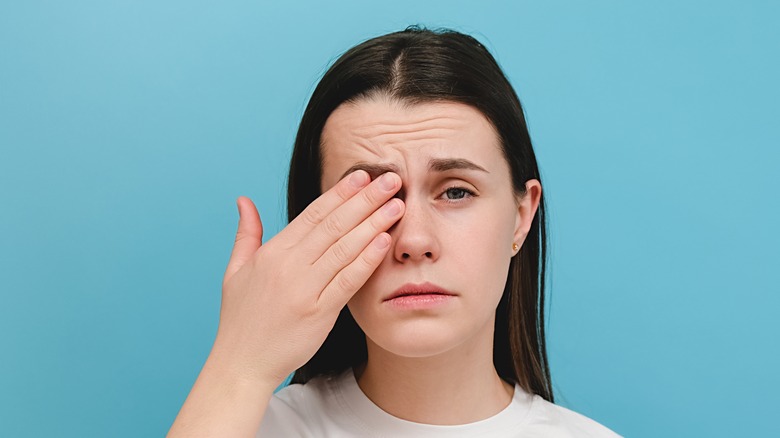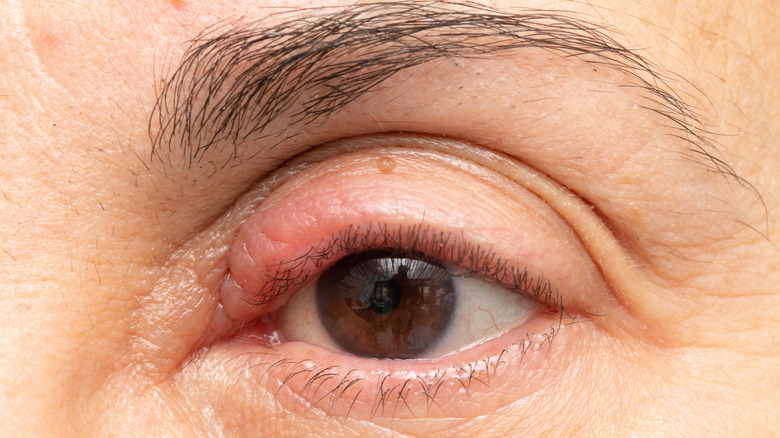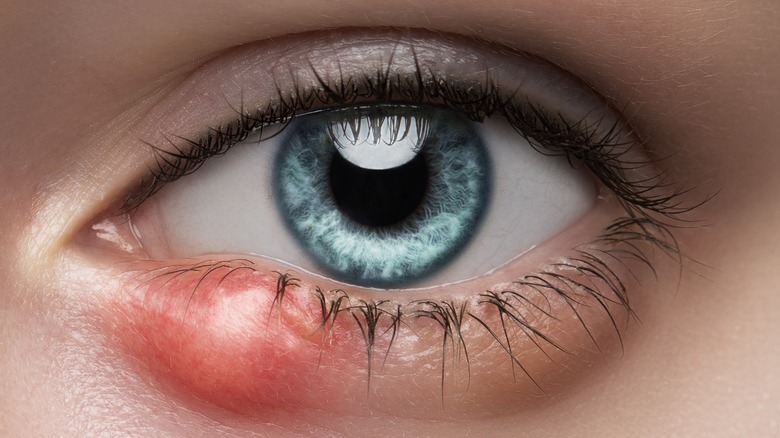Chalazion Versus Stye: What's The Difference?
The eyelids are exposed to a wide range of environmental factors, including sunlight, wind, and pollution, which can cause damage to the skin. They serve several important functions in maintaining the health of the eye and protecting it from harm (via Optometrists Network). One of their primary functions is to keep the surface of the eye moist by producing tears and distributing them evenly over the eye through blinking. In addition, the eyelids protect the eye from foreign objects and bright light by reflexively closing when an object approaches the eye or when bright light is present (via MSD Manuals).
With regards to the skin on the eyelid, it's usually thin and delicate, says Healthline. The eyelid's thinness is important in facilitating easy blinking movements, per a 2007 study published in the journal Skin Research & Technology. However, the eyelid's skin is also susceptible to several conditions that can cause bumps. For example, a chalazion and stye are common bumps on the eyelid but are caused by different factors and characteristics.
If you have an eyelid bump, it is important to see a doctor for a proper diagnosis and treatment. Your healthcare provider can recommend the best treatment option for your specific case and help you to manage any discomfort or symptoms.
What's the difference between a chalazion and a stye?
To distinguish between a chalazion and a stye, it is important to pay attention to the characteristics of the bump, including its level of discomfort. A chalazion is usually painless, while a stye is usually smaller and more painful, says MedicalNewsToday. According to Healthline, a chalazion is a small, painless bump that sometimes occurs on the eyelid. When an oil gland becomes blocked, the oil produced by the gland builds up and forms a small bump, known as a chalazion, per Healthline. A chalazion is usually harmless and doesn't cause any symptoms, although a large one may cause mild discomfort or pressure on the eyelid, according to MedicalNewsToday.
A stye, also known as a hordeolum, is a small, painful bump that appears on the eyelid due to an infection in one of the oil glands in the eyelid, per the Cleveland Clinic. Styes can be caused by various factors, including bacteria, dry skin, and hormonal changes. Styes are usually red, painful, and tender to the touch, and they may cause the eyelid to appear swollen or red. Since chalazion and stye can be treated with different methods, it's best to visit your doctor for a proper diagnosis.
Treatment for chalazions and styes
According to MedicalNewsToday, a chalazion tends to clear up in a few weeks and does not require much treatment. However, they are removed if the condition is severe or persistent. At-home treatment for a chalazion may involve the use of warm compresses to help to reduce inflammation and swelling. Some medications, such as corticosteroid injections, may also be administered to help reduce inflammation.
When treating a stye, your doctor might prescribe antibiotic ointment if your stye occurs often, says the Cleveland Clinic. It is important to use the medication as directed and to complete the full course of treatment to ensure that the infection is fully resolved. Applying a warm compress to the affected eye several times a day might also help. The Cleveland Clinic advises soaking a clean washcloth in warm water and holding it against the affected eye for 5-10 minutes 3-5 times a day.



